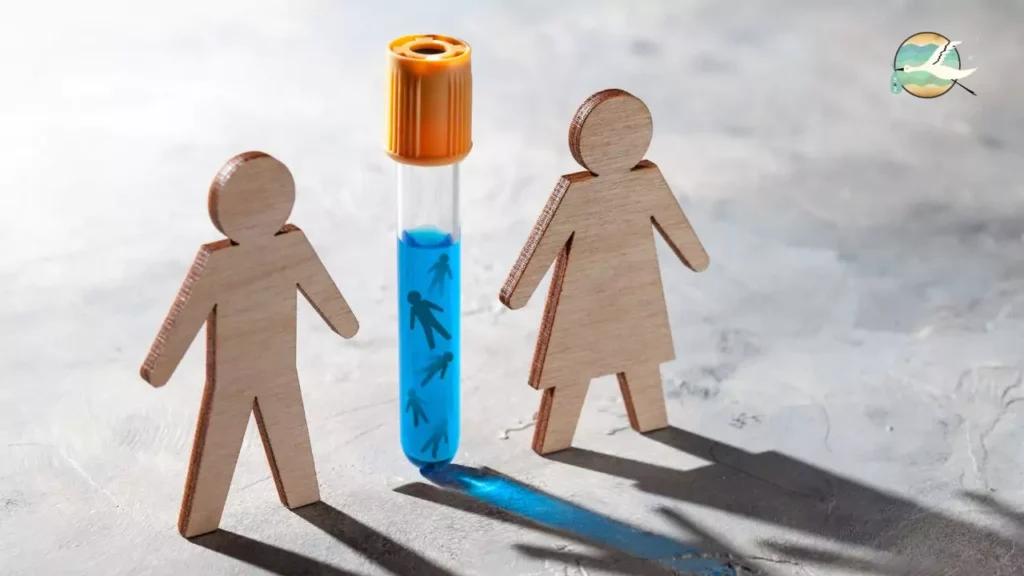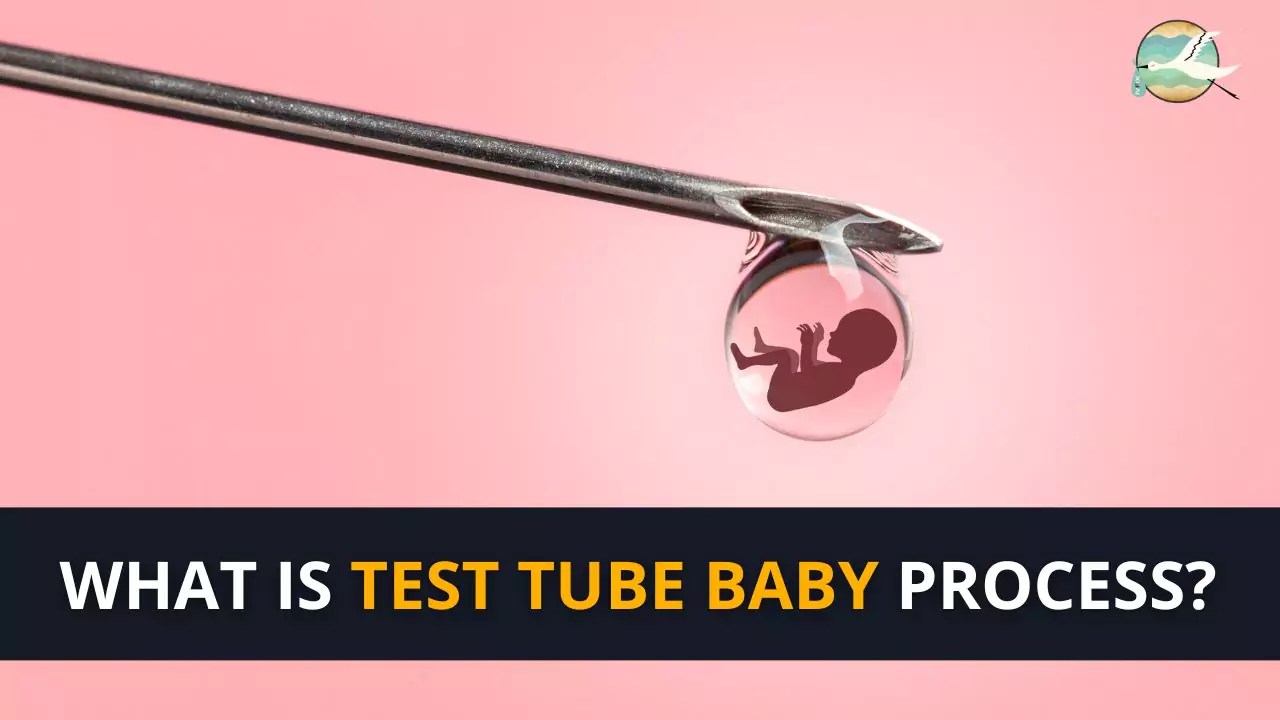Discover the fascinating journey of the test tube baby process. Learn about the science, procedures, and FAQs surrounding this innovative method of conception.
Table of Contents
The test tube baby procedure is a modern-day marvel that has improved the lives of countless infertile couples. This groundbreaking technology, commonly known as in vitro fertilization (IVF), has given people who want to establish families new hope and opportunity. In this detailed book, we will delve into the complexities of the test tube baby process, covering each phase, answering frequently asked questions, and disclosing the science behind this extraordinary journey.
What is test tube baby process?

IVF, also known as the test tube baby procedure, is what you’re referring to. IVF is a medical technique used to help infertile individuals or couples conceive a child. The following is an overview of the IVF procedure:
- Ovulation Stimulation: The lady having IVF is given fertility medicines to stimulate her ovaries to generate many mature eggs. The medical team can track the growth of eggs by using blood tests and ultrasounds.
- Egg Retrieval: Once the eggs have grown, a simple surgical procedure known as egg retrieval is conducted. To retrieve the eggs, a tiny needle is passed through the vaginal wall and into the ovaries. To minimize discomfort, this is normally done under anesthesia.
- Sperm Collection: A sperm sample is collected from the male partner or a sperm donor on the same day as the egg retrieval.
- Fertilization: For fertilization, the collected sperm and eggs are mixed together in a laboratory dish. Intracytoplasmic sperm injection (ICSI), which involves injecting a single sperm right into an egg to promote fertilization, may be utilized in specific circumstances.
- Embryo Development: Embryos that have been fertilized are grown and developed over a period of days in a controlled environment. The embryologists keep an eye on their development and choose the healthiest embryos for transfer.
- Embryo Transfer: Usually, one or more of the healthiest embryos are chosen for uterine implantation. A little catheter that is placed through the cervix is used to do this. One of these embryos may implant in the uterine lining, leading to a pregnancy, the hope is.
- Luteal Phase Support: In order to maintain the uterine lining and improve the likelihood of successful embryo implantation, the woman may be offered hormonal medicines following the embryo transfer.
- Pregnancy Test: A blood test is performed a few weeks after the embryo transfer to see if pregnancy has been achieved. If successful, the lady will keep getting medical attention while the pregnancy is being tracked.
The success rates of IVF can vary depending on the age of the woman, the caliber of the eggs and sperm, and any underlying medical issues. A successful pregnancy may occasionally require several IVF treatments.
The term test-tube baby comes from the fact that the initial stages of IVF entail the fertilization of eggs and sperm in a laboratory dish (test tube), but the actual pregnancy takes place within the woman’s uterus.
Test tube baby process time

IVF also referred to as the test tube baby process, can take a variety of times depending on the circumstances. An IVF cycle typically lasts 4 to 6 weeks.
Ovulation stimulation, which lasts 8 to 14 days, is the first step in the procedure. During this time, fertility drugs are given to the patient in an effort to stimulate the ovaries to produce many mature eggs. A trigger injection is followed by egg retrieval, a brief surgical operation that typically takes place 36 hours later. The eggs are then fertilized in a dish in the lab, and the developing embryos are observed for development over a period of 3 to 6 days.
The embryo transfer process then takes place 3 to 6 days following egg retrieval and lasts for about 15 to 30 minutes. To find out whether conception has occurred after this stage, a pregnancy test is often taken 10–14 days later. A healthy pregnancy may require several IVF rounds, therefore it’s crucial to keep in mind that individual characteristics can affect the overall timeline.
Test tube baby process video
Test tube baby process price
Depending on the clinic, the city, the doctor, and the particular procedures involved, the cost of creating a test-tube baby varies in India. However, a single IVF cycle typically costs around 1,50,000 (US$2,000) in India. Between 1,30,000 (or $1,800 USD) and 2,50,000 (or $3,000 USD) can be spent on this.
Here are some factors that might affect the price of the test tube baby procedure in India:
- The clinic: From clinic to clinic, the price of the test tube baby procedure can differ. While some clinics offer lower prices, some have higher prices. It’s critical to evaluate the costs of several clinics before choosing one.
- The city: The price of creating a test tube baby can also differ from city to city. Treatment expenses in large cities are typically more expensive than those in smaller ones.
- The doctor: Depending on the doctor, the price of the test-tube baby procedure can also change. Different doctors have different fees. It’s crucial to locate a medical professional with high success rates that are high and IVF experience.
- The specific procedures involved: The price of creating a test-tube child can also change based on the particular techniques required. For instance, the cost of care will be higher if the lady needs surgery to recover her eggs.
The following are some extra fees that may be encountered throughout the test tube baby process:
- Medications: Depending on the type of medication and the required dosage, the price of fertility treatments can change. IVF fertility drugs typically cost roughly 50,000 yen ($600) each.
- Ultrasounds and other monitoring tests: IVF cycle progress is monitored using ultrasounds and other monitoring procedures. Depending on how many tests are needed, the price of these tests may change. Ultrasounds and other IVF monitoring tests typically cost approximately 20,000 (US$250).
- Embryo transfer: The process by which the embryos are inserted into the woman’s uterus is known as an embryo transfer. The embryo transfer costs approximately 10,000 (US$125).
- Other costs: The cost of the doctor’s services, laboratory fees, and storage fees for frozen embryos are additional expenses related to the IVF process. The typical price for these additional expenses is about 20,000 yen ($250).
The price of the test tube baby procedure might vary depending on the circumstances of the individual, it is vital. Couples who have had infertility in the past, for instance, might need more extensive therapy, which would raise the price.
It’s crucial to conduct a study and contrast clinic costs if you’re thinking of having a baby using a test tube. The precise costs associated with your therapy should also be discussed with your doctor.
Here are some money-saving tips for the test tube baby process in India:
- Choose a clinic with reasonable charges.
- Before making a decision, compare the prices of several clinics.
- Inquire about any discounts or financing alternatives.
- Consider seeking treatment in a different city or state.
- Consider using donor eggs or sperm to lower treatment costs.
Conclusion
In conclusion, the test tube baby process, formally known as in vitro fertilization (IVF), provides hope to individuals and couples battling with infertility. This medical treatment consists of multiple essential steps, including ovulation stimulation, egg harvesting, fertilization, embryo development, and embryo transfer into the uterus. Individual conditions and clinic protocols can impact how long an IVF cycle lasts. The success of IVF might vary depending on factors such as age, underlying medical issues, and the quality of eggs and sperm.
While IVF can be a hopeful alternative, it’s important to understand that the associated medical procedures, drugs, and laboratory testing generally come at a hefty financial expense. Costs vary greatly depending on location, facility, and exact treatments required. When considering the IVF journey, as with any medical decision, adequate study, consultation with healthcare professionals, and careful consideration of financial issues are essential.
FAQ about the test tube baby
Q1: What is a test tube baby?
A1: The phrase “test-tube baby” refers to a child conceived by the method of in vitro fertilization (IVF). IVF entails fertilizing eggs and sperm outside of the body, in a laboratory dish, and then transferring the resulting embryos into the uterus for a possible pregnancy.
Q2: How does the test tube baby process work?
A2: The IVF procedure, also known as the “test-tube baby” procedure, starts with the use of drugs to stimulate ovulation. Sperm is harvested, and mature eggs are removed from the ovaries. A laboratory dish is used for fertilization, and the resultant embryos are cultured and watched over. Selected healthy embryos are transferred into the uterus, where they may implant and result in pregnancy.
Q3: Who is a candidate for the test tube baby process?
A3: People or couples struggling with infertility concerns such as blocked fallopian tubes, problems with male sperm, endometriosis, or unexplained infertility may want to think about the test tube baby procedure (IVF) as a possible option. The suitability of IVF is determined by a medical evaluation.
Q4: Is the test tube baby process the only option for infertility treatment?
A4: No, the procedure of creating a baby in a test tube (IVF) is just one of many reproductive therapies accessible. Alternatives like fertility drugs, intrauterine insemination (IUI), or surgical treatments may be suggested depending on the cause of infertility.
Q5: How long does the test tube baby process take?
A5: The IVF process typically takes 4 to 6 weeks to complete. Ovulation stimulation, egg retrieval, fertilization, embryo development, embryo transfer, and follow-up monitoring are some of the processes that are covered.
Q6: What is the success rate of the test tube baby process?
A6: Age, general health, and the caliber of the eggs and sperm all play a role in how successful the process of creating a baby in a test tube (IVF) is. A successful pregnancy may take several cycles and has success rates of between 20% and 40% per cycle.
Q7: Are there any risks associated with the test tube baby process?
A7: Although IVF (test tube babies) is typically safe, there are certain hazards, including the possibility of multiple pregnancies (with multiple embryo transfers), ovarian hyperstimulation syndrome, and a slightly increased chance of several pregnancy issues.
Q8: Does insurance cover the test tube baby process?
A8: Depending on the insurance company, the kind of plan, and the location, insurance coverage for IVF, or the “test-tube baby” procedure, varies greatly. Certain portions of the process might be covered by some plans, while others would not cover it at all.
Q9: How can I choose a suitable clinic for the test tube baby process?
A9: When choosing an IVF clinic, take into account aspects like success rates, reputation, location, cost, offered services, and the level of medical staff experience. Making an informed selection will be made easier with research and expert guidance.
Q10: What should I expect emotionally during the test tube baby journey?
A10: Because of its ups and downs, the test tube baby procedure can be emotionally taxing. A wide range of feelings, from optimism and joy to worry and sadness, are felt by many people and couples. It can be helpful to have emotional support from close friends, family members, or therapists.




